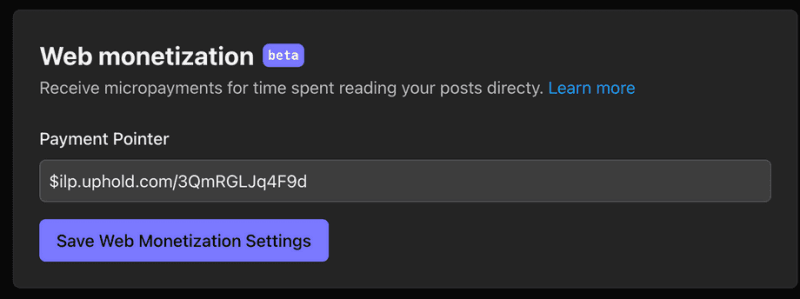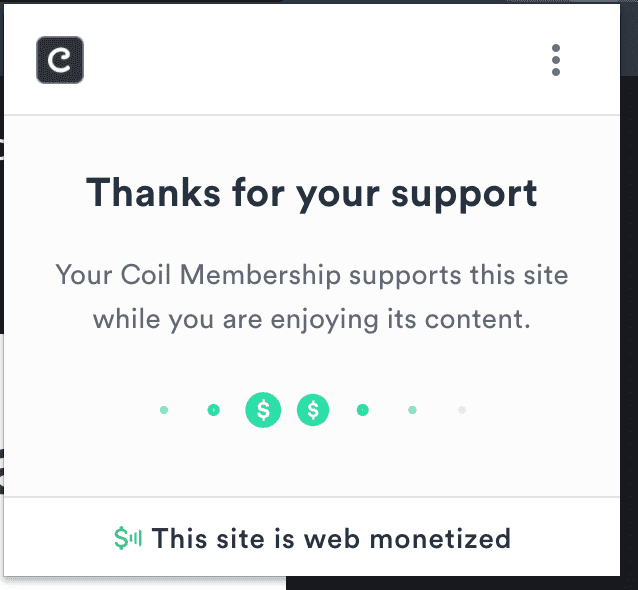Do you remember that scene in Ready Player One, when IOI are showing what the future of the Oasis will look like once they take over?
“We have determined that we’ll be able to fill 80% of the user’s display with advertising before inducing seizures”
Display Advertising
We aren’t living our lives in virtual reality just yet but already it feels like adverts are taking over the web. Especially if you go on some of the big news websites it can be hard to distinguish the content from the adverts.
I recently experimented with using Google Adsense on this website and the results were surprising. Now, this isn’t a high traffic website. I currently only get around 250 - 300 page views a day. However, I was still able to “earn” on average £0.50 a day. This isn’t bad considering I haven’t written a post in 4 months and this is entirely passive income.
Over the month, this would have added up to around £15, which is more than enough to pay for this websites expenses. However, with a minimum Adsense payout of £60, it would have been 4 months until I was able to cash out.
I used the Auto Ads feature of Google Adsense and made sure I turned off the personalised ads and the obnoxious page filling ads. I also made sure to only include ads on blog post pages and turned the ad load down to half of the recommended setting.
This resulted in around 5 - 8 adverts per blog post mixed in amongst the content. If I was only interested in the money, then I could have left them on and in a few more months I would have got a paycheque from the big G.
However, I wasn’t comfortable not knowing exactly what adverts were being shown on my website and with the auto ads feature you have little control over where the ads appear.
Adverts have given website owners a lazy way of generating an income from their content but times are changing and more people are choosing to block adverts.
As a software developer with a tech-savvy readership, the chances of my readers choosing to block adverts is quite high. I even have a Pi-Hole set up in my house to block adverts on all my devices (I should really do a tutorial on this). So it seems a bit hypocritical to serve adverts on my website as well.
So what is the alternative? It turns out there are quite a few alternatives to make an income from your content without resorting to advertising.
Medium
As part of my blog post syndication, I also re-publish my blog posts on Medium with a canonical link back to my website. As you are probably aware, Medium has a paid membership service where you pay $5 a month which allows you to get access to all articles on Medium.
For publishers you get a portion of this membership, depending on how many people read your articles. It is similar to how authors earn revenue on course sites like Pluralsight.
My articles aren’t that popular on Medium. I think part of that is because since they are re-published rather than Medium exclusive articles. So not only are they less likely to be promoted by Medium, they are also less likely to rank in Google as the original article is on alexhyett.com.
So far this year I have earned $0.40 (£0.30) from Medium. I won’t be cracking open the champagne just yet.
However, on Medium, I have only had 26 people read my content according to the Medium stats. So actually $0.015 per reading isn’t that bad. I will continue publishing on Medium and may even do some Medium exclusive posts if the content doesn’t quite match what I normally publish on this site.
Web Monetization
With the rise of cryptocurrency coming into mainstream use, we now have other ways of transferring money from one person to another.
Including the ability to stream fractional amounts of money to the content creators you visit.
Metadata tag monetization
This has now made its way into the browser and is also being proposed as a W3C standard. You can read more about the standard at webmonetization.org.
This is all done with a metadata tag on your website. This is what mine looks like:
<meta name="monetization" content="$ilp.uphold.com/3QmRGLJq4F9d">
You can get your own wallet address by signing up with an account with Uphold or Gatehub. This will allow you to start receiving funds via the Interledger network.
At the moment there is only one Web Monetization Provider called Coil. Coil is a bit like Medium, in that it costs $5 a month and that money is used to distribute funds to the websites you visit. You will need to install the Coil Extension in your browser to start supporting content creators.
Once the above has been added to your website you will start to receive micropayments from your readers who are signed up for Coil. You get $0.36 for every hour a visitor spends on your site. Payments are made using micropayments every second per visitor.
You can even link this to your Dev.to account and receive funds from your readers there too. You will find this option under Settings > Extensions > Web monetization.
If you sign up for Coil and download the extension you will see this when you are on a monetised website:
You can actually see money streaming into your account in the Uphold app which is pretty cool. To be able to transfer the money to your account you need to have received at least £0.02 which isn’t hard.
It is also possible to make exclusive content for paying visitors which is something I will experiment with soon.
Paywall
Talking of exclusive content. There are more and more websites that are locking all of their content behind a paywall. This is in response to dropping ad revenue.
Generally, this is being used by big established media outlets like The Times or The Guardian. However, there are smaller websites that are locking content behind membership sites. They have most of their content available for free but for additional help, exclusive information and access to a community a membership option is available.
If you are expecting people to pay monthly for access to your content you need to make sure you are committed to creating content on a regular basis.
Brave Browser
The other option for streaming money is via the Brave Browser. This browser is based on Chrome but is security and privacy-focused and has better support for Web3 with cryptocurrency wallets built-in.
Brave will block ads and trackers for you while you visit websites. This does mean that sites that rely on adverts for their income won’t be getting any money from your visits. To counteract this Brave have come up with Brave Rewards. With Brave Rewards turned on you will get the occasional notifications adverts that don’t track you or use your data.
Each time you view an advert you earn BAT tokens. These can then be converted to fiat currencies by you or you can use them to contribute to the websites you visit or you can even tip a website directly.
To become a creator and earn BAT from visitors to your site you will need to signup and verify your website.
Once verified visitors will see this in the browser:
Users then have the option to Send a Tip or add in a monthly contribution.
Donations
The other option you may have noticed on my website is my Buy Me A Coffee button. We don’t think twice about spending £3 - 4 on a coffee at Starbucks but we don’t even consider paying for content that we consume. A long blog post can take many hours to research and write and the chances are the blog owner won’t earn anything from that.
If a blog post has helped you and is written by a single developer then sending that person a “coffee” can be a great way to support them.
Buy Me A Coffee is set up to send money directly to Stripe or Paypal which means there is no minimum payout, unlike ad networks.
I am very grateful to the few people that have already bought me a coffee as a thank you for the articles I have written.
Affiliate Links
The other way many website owners earn money is through affiliate links. Affiliates are people who promote another companies product and in return earn a commission.
The person clicking the link doesn’t pay anymore but if they buy something, you will earn a commission from the sale. Lots of websites have affiliate programs you can sign up for. The commissions can vary from 4 - 25% and generally there will be a minimum payout before you can receive the funds.
As a software developer, I don’t talk about a lot of products. The software I use daily is free after all (Visual Studio Code). However, I do have affiliate links to the physical things that make up my home office.
Product Sales
Finally, the last ad-free way of making money on your blog is to sell products. This could be eBooks, software, website templates or courses. Of course, a lot of effort goes into building out a product but it can be very profitable.
I have made some money in the past from website templates and desktop software and it can be a good little side hustle or even a full-time income.

























